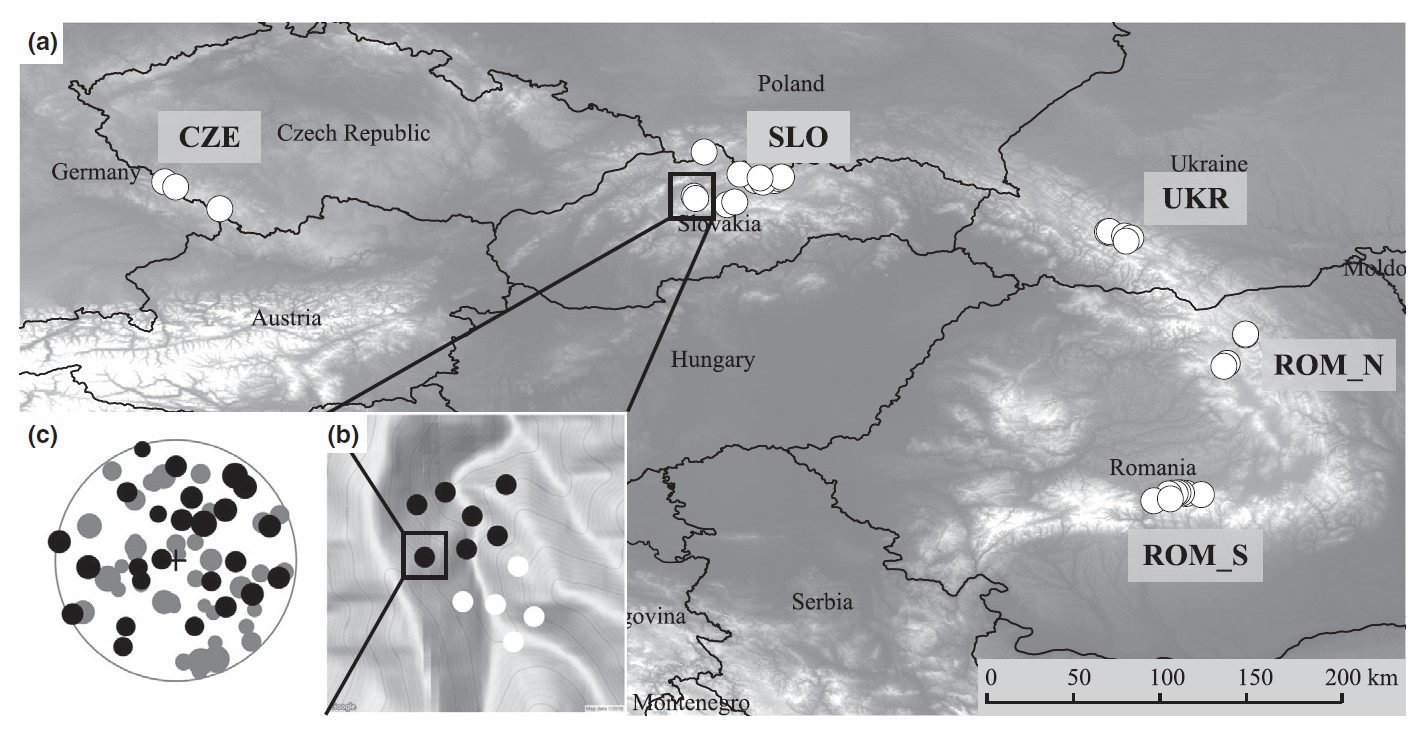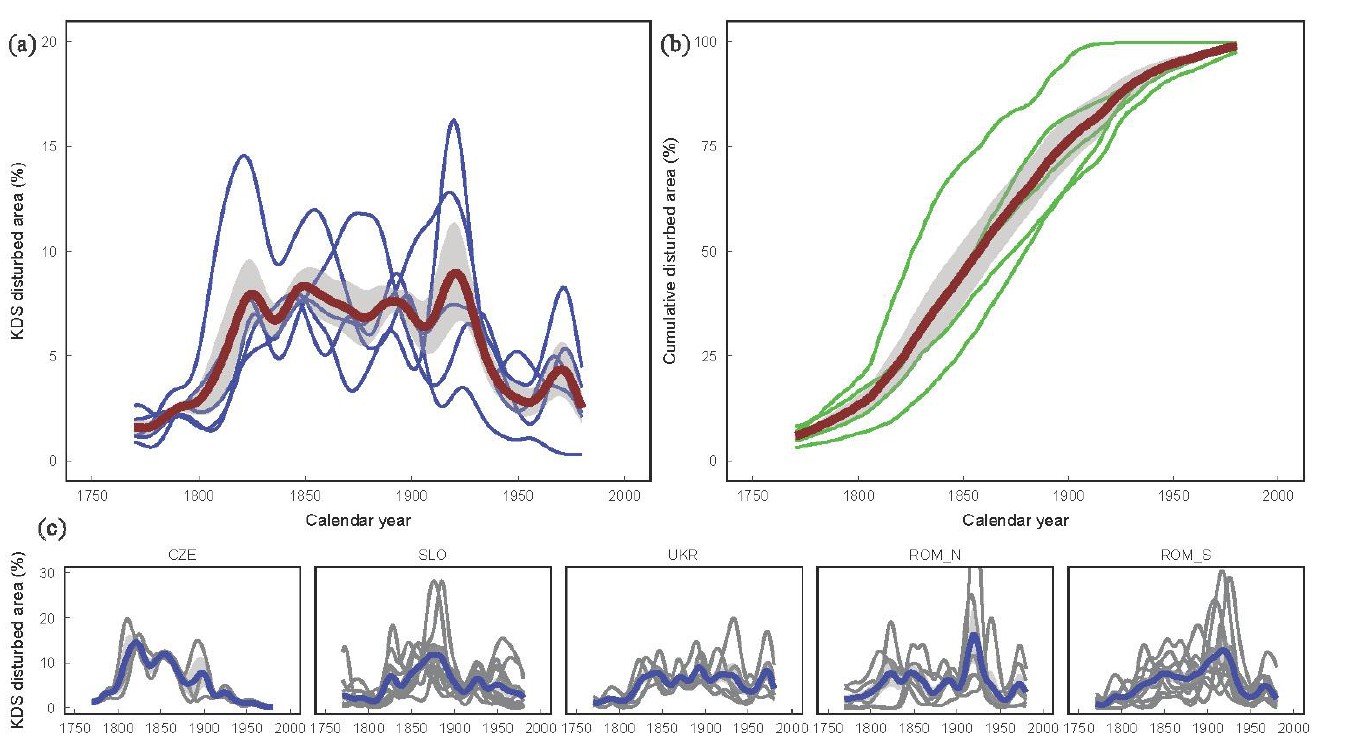Long-term legacies of forest disturbances
Legacy effects from past disturbances and climatic extremes drive recent disturbances in the primary forests of Central Europe, finds a study recently published in Global Change Biology.
Tree rings store a tremendous amount of information. They, amongst other things, allow the reconstruction of disturbances in forest ecosystems, and are thus a critical resource to gain insights into past forest disturbance regimes. Based on a large database of tree rings collected throughout Central and Eastern Europe by the RESIN collaborator Miroslav Svoboda and the REMOTE Team, Schurman et al. analyzed the past disturbance regime in primary Norway spruce forests, and how legacies from past disturbances affect current disturbance activity.

The results show that roughly 75% of the current canopy trees in old-growth forests regenerated prior to 1900, suggesting that the 19th century was a rather disturbed period in these forests, while the first part of the 20th century has seen much less disturbance. Increases in disturbance activity in recent years were clearly related to disturbance history, with the severity of contemporary disturbances increasing with each stands estimated time since last major disturbance. In addition to finding a clear signal of drought on disturbances in these forests the analysis shows that disturbance regimes can experience non-random fluctuations at the scale of centuries. It is crucial to account for these long-term legacies when interpreting current trends in natural disturbances. For more details see the paper, published in Global Change Biology.
